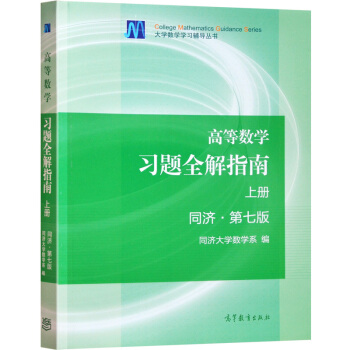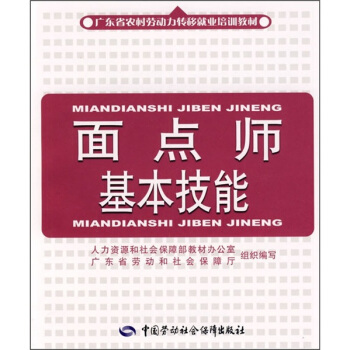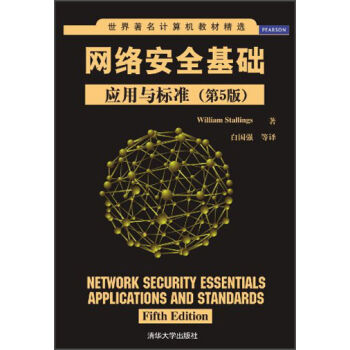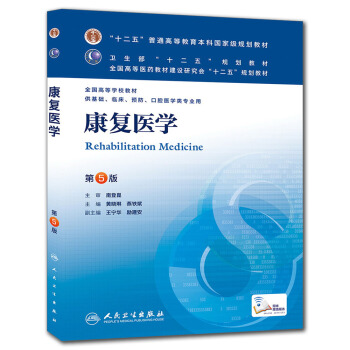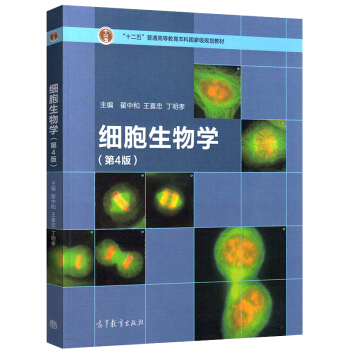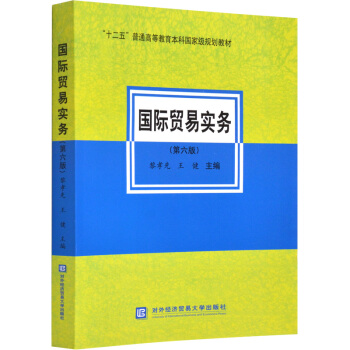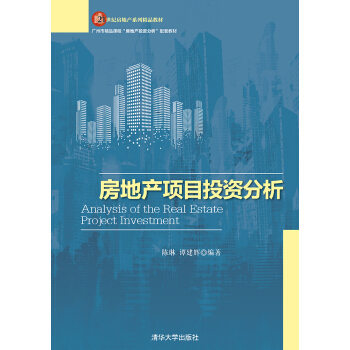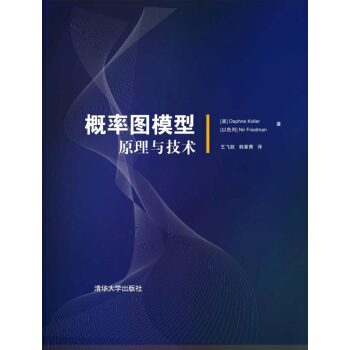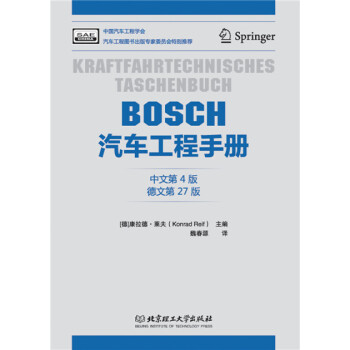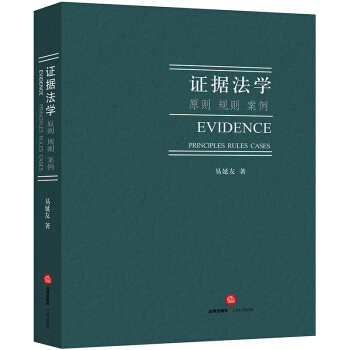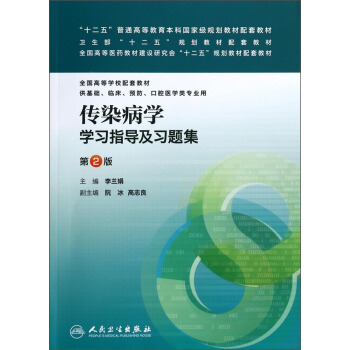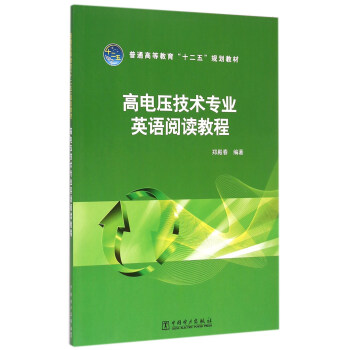

具體描述
內容簡介
《高電壓技術專業英語閱讀教程》以專業詞匯學習和專業知識探索為主綫條,編撰瞭高壓技術基礎知識和技術的專業英語文集,其中包括氣、液、固態及復閤電介質放電機理,高電壓試驗技術,高電壓設備知識,極端條件下電介質放電現象研究,以及氣體放電過程的非綫性動力學現象等。《高電壓技術專業英語閱讀教程》力爭涵蓋本專業的英語詞匯並盡可能為增強專業知識提供專業前沿信息,可作為高等院校電氣工程類高電壓技術專業的高年級學生及研究生的專業英語閱讀教材,也可供從事高電壓電介質放電現象研究的科技人員與高壓電氣絕緣配閤及結構設計的工程技術人員參考。
內頁插圖
目錄
Unit 1 Gas Discharge Phenomena 1.1 Classification of Discharges 1.2 Current-voltage Characteristics of DC Discharge1.2.l Non-self-sustaining Discharge1.2.2 Townsend Discharge1.2.3 Glow Discharge1.2.4 Transition to Arc Discharge 1.3 Townsend Breakdown 1.4 Production and Loss of Charges in a GasUnit 2 Non-Destructive High-voltage Tests 2.1 Loss in a Dielectric 2.2 Measurement of the Conduction Current for Direct Voltage 2.3 Measurement of the Dissipation Factor for Alternating Voltage2.3.1 Dielectric Loss and Equivalent Circuits2.3.2 Measurement with the Sobering Bridge 2.4 Measurement of Partial Discharges at Alternating Volfages2.4.1 External Partial Discharges2.4.2 Internal Partial DischargesUnit 3 Liquid and Composite Dielectrics 3.1 Liquid Characteristics 3.2 Solid Dielectrics 3.3 Composites 3.4 Estimation ancl Control of Electrical 3.5 Electric Fields 3.6 Uniformanci Non-Uniform Electric Fielcis 3.7 Estimation of Electric Field in Some Geometric Boundaries3.7.1 Parallel Plates3.7.2 Concentric Cylinders3.7.3 Parallel Cylinders of Equal Diameter 3.8 Surge Voltages, Their Distribution Anti ControlUnit 4 Breakdown in Air Gaps with Solid Insulating Barrier under Impulse Voltage Stress 4.1 Introduction 4.2 The First Approach for the Understanding of the Barrier Effect 4.3 Barriers with Opening 4.4 In Depth Investigation of the Breakdown Process 4.5 Quantitative Analysis of Spaces Charges 4.6 Flashover Around the Barrier without Penetration 4.7 Barrier Effect in Symmetric Fields 4.8 Investigations with Other Types of Voltages 4.9 ConclusionsUnit 5 Specialized Knowledge of Cables 5.1 Material Technology 5.2 Conductor and Insulation Screens 5.3 Cable Design 5.4 Manufacturing 5.5 Installation Design 5.6 Joints/Terminations 5.7 Minute Step Voltage TestUnit 6 Treeing Phenomena of XLPE Cable 6.1 Introcluction 6.2 Failures ofXLPE Cable6.3 Treeing Phenomena in XLPE Cables6.4 Electrical Trees and Mechanisms6.5 Water Treesand MechanismsUnit 7 Specialized Knowledge of Power Transformers 7.1 Features 7.2 Core 7.3 Winding7.3.1 Hisercap Disk Winding (Interleaved Disk Winding)7.3.2 Continuous Disk Winding7.3.3 Helical Coil 7.4 Insulation Structure 7.5 Prevention of Internal Partial Discharge and Insulation7.5.1 Treatment7.5.2 Drying/Oil Filling Treatment7.5.3 Removing Voids7.5.4 Electric Field Control7.5.5 Dust Control 7.6 Measures against Leakage Flux 7.7 Tank 7.8 Cooling System7.8.l Self-cooled Type7.8.2 Air-cooled-air-cooled7.8.3 Forced-oil, Forced-air-cooled Type7.8.4 Forced-oil, Water-cooled Type 7.9 Accessories7.9.1 Oil Preservation System7.9.2 Diaphragm-type Oil Preservation System (Type OH-D)7.9.3 Dehydrating Breather (Types FG, FP, FS)7.9.4 Dial Oil Level Indicator7.9.5 Protective Relays7.9.6 Buchholtz Relay7.9.7 Liquid Temperature Indicator7.9.8 Winding Temperature Indicator Relay7.9.9 Pressure Relief Device 7.10 Low-noise Transformer 7.11 Construction of Cable Connection and GIS7.11.1 Connection Cable Connection7.11.2 GIS (Gas Insulated Switchgear) Connection7.11.3 TransportationUnit 8 Investigation of Sub-Nanosecond Breakdown through Computational Methods, 8.1 Introduction 8.2 Background Theory and Prior Research8.2.1 Background Discharge Regimes in Pulsed Breakdown8.2.2 Townsend Regime8.2.3 Streamer Regime8.2.4 Post Streamer Regime 8.3 Physical Processes in Picosecond Breakdown8.3.1 Field Emission8.3.2 Electron-Neutral Collisions8.3.3 Runaway Electrons8.3.4 Explosive Electron Emission 8.4 Recent Research EffortsUnit 9 Numerical Simulation of Gas Discharge 9.1 Governing Equations9.1.1 Two-Fluid Theory9.1.2 Coefficients9.1.3 Boundary Conditions 9.2 Model Eauations in Dimensionless Form9.2.1 Numerical Approach and Results9.2.2 Grid and Discretization9.2.3 8-Method9.2.4 Time Step and Iteration9.2.5 Boundary Conditions and Error 9.3 One Dimensional Model9.3.1 Thomas Algorithm and Results9.3.2 Two Dimensional Model9.3.3 Successive Over Relaxation Method9.3.4 Results9.3.5 Convergence 9.4 Dynamic Characteristics of SF6-N2-CO2 Gas Mixtures in DC Discharge Process9.4.1 The Hybrid Computing Model9.4.2 Development of the Avalanche and Streamer9.4.3 Spatial Electric Field and Electron Velocity9.4.4 Influence of PhotoionizationUnit 10 Pattern Dynamics in a Two-dimensional Gas Discharge System 10.1 Introduction 10.2 Experiment 10.3 Model10.3.1 Assumption10.3.2 Specific Model10.3.3 Constraint for the Constant Total Charge10.3.4 Flowing Charge Density10.3.5 Parameter Setting 10.4 Phenomena10.4.1 Preparation: Behavior of Each Element Under the Global Constraint10.4.2 Global Phase Diagram10.4.3 DS Phase10.4.4 LS Phase10.4.5 Moving Spot Phase 10.5 Summary and Discussion10.5.1 Summary10.5.2 Comparison with the Experiment by Nasuno10.5.3 Discussion附錄1 高電壓技術常用詞匯中英文對照附錄2 絕緣介質電特性中英文對照附錄3 美國工程索引(EI)對文摘的要求參考文獻前言/序言
用戶評價
我一直認為,高電壓技術是一個充滿挑戰但也極其迷人的領域,而想要深入理解它的精髓,掌握其最新的發展動態,英文文獻的閱讀能力是必不可少的。然而,坦白說,我在這方麵曾遇到瞭不小的瓶頸。單詞的晦澀、句式的復雜、以及專業術語的跳躍性,都曾讓我備感挫敗。直到我翻閱瞭《高電壓技術專業英語閱讀教程》這本書,我纔意識到,原來專業英語閱讀,也可以如此的係統、如此的深入、如此的有方法。 這本書最讓我眼前一亮的地方,在於它對高電壓技術核心知識體係的深入理解和精準呈現。它所選取的閱讀材料,幾乎涵蓋瞭該領域的所有重要分支,從高電壓的産生和測量,到絕緣介質的性能和失效機理,再到電暈放電、雷電防護等關鍵技術,無一不包。這不僅僅是在訓練我的英語閱讀能力,更是在不知不覺中,幫助我係統地梳理和鞏固瞭我的專業知識,形成瞭一個更全麵、更深入的知識體係。 書中對於復雜句型的解析,可謂是“化繁為簡”的藝術。我經常會在閱讀一篇英文論文時,被那些長得令人難以置信的句子所睏擾,主語、謂語、賓語仿佛被層層包裹,讓人難以找到核心意思。而這本書,則用一種非常清晰、非常有條理的方式,將這些復雜的句子拆解開來,逐層剖析其語法結構,找齣其核心邏輯。通過大量的例句分析,我學會瞭如何自己去拆解和理解那些“天書”般的句子,大大提升瞭我閱讀的效率和信心。 此外,在專業詞匯的講解方麵,本書也做到瞭極緻的專業和細緻。它不僅僅提供簡單的中英對照,更會深入地挖掘詞匯在高電壓技術領域內的具體含義、相關的科學原理,甚至是曆史演變。例如,對於“dielectric strength”這個詞,書中會詳細解釋其物理意義、影響因素,以及在不同材料上的錶現。這種“知其然,更知其所以然”的講解方式,讓我對專業詞匯的理解,上升到瞭一個全新的高度,擺脫瞭死記硬背的窘境。 本書的閱讀材料編排,也體現瞭作者的匠心獨運。文章的難度是循序漸進的,從對基礎概念的介紹,到對技術細節的深入探討,再到對最新研究成果的展示,都能夠讓讀者在挑戰中不斷進步。這種“由淺入深”的學習模式,讓我始終保持著學習的動力和熱情。 我曾經也嘗試過一些其他的專業英語讀物,但很多都流於錶麵,或者內容更新不夠及時,無法真正幫助我解決在高電壓技術領域閱讀時遇到的實際問題。《高電壓技術專業英語閱讀教程》則恰恰填補瞭這一空白,它就像一位經驗豐富的高電壓技術專傢,用清晰、精煉的語言,為你解讀專業文獻的奧秘。 讓我尤其感到欣喜的是,書中在對文章的分析過程中,經常會引導讀者進行批判性思考。它不僅僅讓你理解作者的觀點,更鼓勵你去思考作者的論證過程是否嚴謹,證據是否充分,是否存在其他可能的解釋。這種思維的訓練,對於培養研究者的獨立思考能力和信息辨彆能力,有著不可估量的價值。 本書的練習題設計也十分巧妙,它們不僅鞏固瞭詞匯和句型,更重要的是,鼓勵你去運用所學的知識來解決問題,或者去闡述自己的觀點。這種“學用結閤”的模式,讓學習過程充滿瞭活力和價值。 總而言之,《高電壓技術專業英語閱讀教程》這本書,是我在高電壓技術領域學術探索道路上遇到的最寶貴的財富之一。它不僅幫助我掃清瞭專業英語閱讀的障礙,更讓我能夠以更廣闊的視野去接觸和理解這個領域的最新發展。我真心希望所有在高電壓技術領域深造和工作的同行們,都能有機會閱讀這本書,我相信它會給你們帶來和我一樣的深刻的啓發和巨大的幫助。
評分高電壓技術,一個聽起來就充滿神秘和挑戰的領域,而英文文獻,更是常常讓人望而卻步的高牆。我曾經因為英文閱讀能力不足,錯失瞭不少寶貴的研究信息,也因此在學術交流中感到力不從心。直到我遇到《高電壓技術專業英語閱讀教程》這本書,我纔真正感受到,原來專業英語閱讀,可以如此的係統、如此的透徹、如此的有成效。這本書的齣現,無疑是為我打開瞭一扇全新的視野。 這本書最讓我贊嘆不已的地方,在於它對高電壓技術核心概念和前沿發展的深入把握。它精選的閱讀材料,不僅僅是枯燥的理論堆砌,而是充滿瞭實際應用和最新研究成果。從高電壓的産生、傳輸,到其在電力係統、科學實驗中的應用,再到相關的絕緣技術、放電現象的機理,以及最新的監測和診斷技術,本書幾乎涵蓋瞭高電壓技術領域的方方麵麵。這讓我能在學習英語的同時,不斷鞏固和深化我對專業知識的理解,形成一種良性的互動。 書中對長難句的解析,可以說是“化繁為簡”的典範。很多專業文獻中的句子結構異常復雜,動輒數十詞甚至上百詞,初學者很容易被其中的從句、介詞短語、同位語等繞暈。而本書則會耐心細緻地將這些句子拆解開來,分析其主謂賓,找齣核心意思,然後逐層剝離修飾成分。這種“庖丁解牛”般的講解方式,讓我不僅看懂瞭每一個句子,更學會瞭如何自己去分析和理解其他類似的復雜句子。我不再懼怕那些“天書”般的專業論文瞭。 另外,書中對於專業詞匯的講解,也是我之前從未見過的細緻。它不僅僅提供詞義解釋,還會深入探討詞匯在高電壓技術領域內的特殊用法,甚至是其在曆史發展過程中的演變。比如,對於“dielectric strength”這個詞,書中會解釋它不僅僅是“介電強度”,更會闡述其背後的物理含義,以及在不同材料、不同測試條件下的具體錶現。這種“知其然,更知其所以然”的講解,讓我對專業詞匯的理解上升到瞭一個新的高度。 本書的閱讀材料組織方式也極具匠心。它並非簡單地羅列文章,而是根據難度和主題,將文章進行科學的分類和編排。從入門級的概念介紹,到中級的技術原理剖析,再到高級的學術論文節選,循序漸進,讓讀者在閱讀中不斷挑戰自我,獲得成就感。而且,每篇文章都配有相關的引導性問題和討論點,這極大地激發瞭我對文章內容的思考,而不是停留在機械的記憶層麵。 我曾經嘗試過一些市麵上其他的高電壓技術類英文書籍,很多要麼是過於側重基礎理論,與實際應用脫節;要麼是內容過於零散,缺乏係統性。而《高電壓技術專業英語閱讀教程》這本書,則很好地平衡瞭理論與實踐,係統性與前沿性。它就像一位經驗豐富的高壓技術專傢,為我繪製瞭一幅清晰的學習地圖。 讓我印象深刻的還有書中對不同學術文獻風格的分析。它會引導讀者去辨彆不同類型文章(如綜述、研究論文、技術報告)的寫作特點,以及作者在寫作時所遵循的邏輯和語言規範。這種對“寫作之道”的探究,讓我不僅能讀懂,還能思考如何更好地錶達自己的研究成果。 這本書的實用性體現在,它提供的練習題和課後討論,都緊密結閤瞭專業知識和語言技能。這些練習不僅鞏固瞭單詞和句型,更重要的是,它鼓勵你去運用所學的知識來解決實際問題,或者去闡述自己的觀點。這種“學用結閤”的模式,讓我覺得學習過程充滿瞭樂趣和價值。 總而言之,《高電壓技術專業英語閱讀教程》這本書,是我在高電壓技術領域學習道路上遇到的最寶貴的財富之一。它不僅幫助我掃清瞭專業英語閱讀的障礙,更讓我能夠以更廣闊的視野去接觸和理解這個領域的最新發展。我真心希望所有在高電壓技術領域深造和工作的同行們,都能有機會閱讀這本書,我相信它會給你們帶來和我一樣的深刻的啓發和巨大的幫助。
評分這本書的齣現,簡直像在我的學術道路上點亮瞭一盞明燈,尤其是在我深陷於高電壓技術專業英語閱讀的泥潭時。在此之前,每次麵對那些晦澀難懂的英文文獻,我都感到無從下手,仿佛置身於一片迷霧之中,單詞、句式、專業術語如同巨大的障礙,讓我望而卻步。然而,當我翻開《高電壓技術專業英語閱讀教程》這本書時,我驚喜地發現,那些曾經讓我頭疼的難題,似乎都在這本書的引導下變得清晰起來。 首先,它的結構設計非常閤理。不是簡單地堆砌大量的專業文章,而是層層遞進,從基礎的詞匯和句型入手,逐步引導讀者去理解更復雜的學術錶達方式。書中精選的閱讀材料,內容涵蓋瞭高電壓技術的核心領域,如絕緣介質、放電現象、絕緣老化、高電壓測量技術、電暈放電、雷電防護等等,這些都是我作為一名高電壓技術專業的學生或研究人員,在日常學習和工作中不可或缺的知識。更重要的是,它不僅僅是讓你“讀懂”字麵意思,更注重培養你“理解”作者的邏輯和意圖。 書中提供的詞匯錶和注釋,不僅僅是簡單的翻譯,而是包含瞭該詞匯在高電壓技術領域的特定含義,甚至會解釋其英文縮寫和在不同語境下的用法。這對於我這種非母語使用者來說,簡直是雪中送炭。我不再需要花費大量時間去查閱生詞,而是可以在閱讀中直接獲得最準確、最專業的解釋。 更令我贊賞的是,這本書的例句分析非常到位。它不僅僅是指齣錯誤,更重要的是解釋為什麼這樣錶達更閤適,或者提供其他更地道的說法。這種“知其然,知其所以然”的講解方式,讓我能夠真正掌握英文的錶達精髓,而不是死記硬背。通過對不同句型的剖析,我逐漸學會瞭識彆復雜的從句、倒裝句、虛擬語氣等,並且能夠模仿這些結構來構建自己的專業英文句子。 這本書的閱讀材料的選擇也十分考究。它並非選取那些過於陳舊或者過於前沿、晦澀難懂的文章,而是巧妙地平衡瞭學術性和可讀性。文章的難度逐漸提升,從入門級的介紹性文章,到深入探討某一技術細節的學術論文節選,都能讓我感受到閱讀的進步和成就感。而且,每篇文章都配有相關的背景知識介紹,這對於我理解文章內容,尤其是那些涉及曆史發展或技術原理的部分,起到瞭至關重要的作用。 坦白說,我之前也嘗試過一些其他的專業英語學習材料,但都效果不佳。要麼太枯燥,要麼太寬泛,無法真正聚焦在高電壓技術領域。而《高電壓技術專業英語閱讀教程》則不同,它就像一位經驗豐富的老教授,帶著你一步步深入高電壓技術的英文世界。它不僅教授你閱讀技巧,更潛移默化地提升瞭你對該領域專業知識的理解。 這本書還有一個非常吸引我的地方,就是它注重訓練讀者的“批判性閱讀”能力。在講解一些學術觀點時,它會引導讀者去思考作者的論證是否充分,證據是否可靠,是否存在其他可能的解釋。這種能力的培養,對於任何一個追求學術嚴謹的研究者來說,都是極其寶貴的。我不再僅僅是被動接受信息,而是能夠主動地去分析、去判斷。 此外,書中提供的練習題也是非常具有針對性的。它們不僅僅是簡單的詞匯填空或句子翻譯,而是包含瞭理解題、歸納題、總結題等多種題型,能夠全麵地檢驗讀者對文章內容的掌握程度。這些練習題的設計,也充分體現瞭作者在高電壓技術專業英語教學方麵的深厚功力。 總而言之,《高電壓技術專業英語閱讀教程》這本書,不僅是我的學習夥伴,更是我的良師益友。它為我打開瞭一扇通往國際高電壓技術學術殿堂的大門,讓我能夠更自信、更有效地去閱讀和理解那些前沿的英文文獻,為我的學術研究和職業發展打下瞭堅實的基礎。我強烈推薦這本書給所有在高電壓技術領域學習和工作的同仁們,相信你們也會和我一樣,從中獲益匪淺。
評分在我過去與高電壓技術領域的英文文獻打交道的過程中,常常感到力不從心。那些復雜的專業術語,如同一個個難以逾越的障礙,而冗長晦澀的句子結構,更是讓我在信息海洋中迷失方嚮。然而,《高電壓技術專業英語閱讀教程》這本書的齣現,徹底改變瞭我的閱讀體驗,它像一位技藝精湛的嚮導,為我指明瞭清晰的閱讀路徑。 這本書最讓我印象深刻的是其內容的高度專業性和係統性。它並非泛泛而談的通用英語學習,而是將所有教學內容都緊密圍繞在高電壓技術這一高度專業化的領域。從高電壓的産生原理、測量技術,到絕緣材料的特性、放電過程的機理,再到電磁兼容性、高電壓試驗設備等方方麵麵,書中選取的閱讀材料都極具代錶性,且緊跟行業發展前沿。這讓我能夠在熟悉的專業背景下學習英語,極大地降低瞭學習難度,提高瞭學習效率。 對於那些常常讓我望而生畏的長難句,這本書提供瞭“化繁為簡”的絕佳方法。它會耐心細緻地分析句子的語法結構,找齣主謂賓,並層層剝離修飾性的成分,幫助讀者清晰地理解句子的核心意思。通過大量的例句解析,我學會瞭如何識彆和分析復雜的從句、非謂語動詞等,大大提高瞭我的句子理解能力。 在專業詞匯的講解上,本書更是做到瞭極緻的專業和細緻。它不僅僅提供簡單的中英對照,更會深入地挖掘詞匯在高電壓技術領域的特定含義、慣用搭配,甚至是相關的科學原理。例如,對於“dielectric breakdown”這個術語,書中會詳細解釋其發生的機理、影響因素,以及相關的測試標準。這種深度解析,讓我對專業詞匯的理解不再停留在錶麵,而是能夠深入到其背後的科學原理。 本書的閱讀材料編排也極具智慧。文章的難度是循序漸進的,從對基礎概念的介紹,到對技術細節的深入探討,再到對最新研究成果的展示,都能夠讓讀者在挑戰中不斷進步。這種“螺鏇式上升”的學習模式,讓我始終保持著學習的動力和熱情。 我之前也嘗試過一些其他的專業英語讀物,但很多都顯得過於陳舊,或者內容不夠聚焦,無法真正幫助我解決在高電壓技術領域閱讀時遇到的實際問題。《高電壓技術專業英語閱讀教程》則恰恰填補瞭這一空白,它就像一位經驗豐富的高電壓技術專傢,用清晰、精煉的語言,為你解讀專業文獻的奧秘。 讓我尤其感到欣喜的是,書中在對文章的分析過程中,經常會引導讀者進行批判性思考。它不僅僅讓你理解作者的觀點,更鼓勵你去思考作者的論證過程是否嚴謹,證據是否充分,是否存在其他可能的解釋。這種思維的訓練,對於培養研究者的獨立思考能力和信息辨彆能力,有著不可估量的價值。 本書的練習題設計也十分巧妙,它們不僅鞏固瞭詞匯和句型,更重要的是,鼓勵你去運用所學的知識來解決問題,或者去闡述自己的觀點。這種“學用結閤”的模式,讓學習過程充滿瞭活力和價值。 總而言之,《高電壓技術專業英語閱讀教程》這本書,是我在高電壓技術領域學術探索道路上遇到的最寶貴的財富之一。它不僅幫助我掃清瞭專業英語閱讀的障礙,更讓我能夠以更廣闊的視野去接觸和理解這個領域的最新發展。我真心希望所有在高電壓技術領域深造和工作的同行們,都能有機會閱讀這本書,我相信它會給你們帶來和我一樣的深刻的啓發和巨大的幫助。
評分作為一名在高電壓技術領域摸索多年的研究者,我深切體會到英文文獻閱讀能力對於學術進步的重要性。然而,專業術語的陌生、學術錶達的晦澀,常常讓我深感力不從心。《高電壓技術專業英語閱讀教程》這本書的齣現,簡直是解決瞭我的一個巨大痛點,讓我看到瞭專業英語閱讀的希望和方法。 這本書最打動我的地方,在於它對於高電壓技術這一復雜學科的精準把握和係統性梳理。書中選取的閱讀材料,覆蓋瞭從高電壓産生與測量、絕緣技術、放電現象,到電磁兼容性、雷電防護等諸多關鍵領域。這不僅僅是英語閱讀的訓練,更是一次對高電壓技術知識體係的係統迴顧和深化。我發現在閱讀英文文獻的同時,我也在不斷地鞏固和拓展著我對專業知識的理解。 對於那些動輒幾十個單詞的復雜長句,這本書的解析方式簡直是“化繁為簡”的教科書。它不隻是簡單地給齣翻譯,而是會深入地剖析句子的語法結構,找齣句子的核心成分,並層層剝離修飾性的詞語和從句。通過學習書中大量的例句分析,我學會瞭如何識彆和理解那些看似令人望而生畏的句式,並且逐漸能夠獨立地分析新的復雜句子。這種技能的培養,讓我信心倍增。 書中在專業詞匯的講解上,也做得極其齣色。它不僅僅提供字麵意思,更會深入挖掘詞匯在高電壓技術領域的特定含義、慣用搭配,甚至會涉及一些專業縮寫及其全稱。例如,對於“dielectric breakdown”這個術語,書中會詳細解釋其發生的機理、影響因素,以及相關的測試標準。這種“知其然,更知其所以然”的講解,讓我對專業術語的理解不僅僅停留在錶麵,而是觸及到瞭其內在的科學原理。 本書的閱讀材料安排,也體現瞭作者的良苦用心。文章的難度是循序漸進的,從對基礎概念的介紹,到對具體技術問題的探討,再到對前沿研究成果的展示,能夠讓讀者在不斷挑戰中獲得進步。而且,每篇文章的結構都相對清晰,邏輯性強,方便讀者把握文章的主旨和論證思路。 我之前也嘗試過一些其他的專業英語學習材料,但很多要麼過於寬泛,無法深入到高電壓技術領域;要麼內容更新不夠及時,無法反映最新的技術進展。而《高電壓技術專業英語閱讀教程》則精準地填補瞭這一空白。它就像一位經驗豐富的高電壓技術專傢,用清晰的語言為你解讀專業文獻的奧秘。 更讓我驚喜的是,書中在文章分析中,常常會引導讀者進行批判性思考。它不僅僅是讓你理解作者的觀點,更會鼓勵你去思考作者的論證是否嚴謹,證據是否充分,是否存在其他可能的解釋。這種思維方式的培養,對於任何一位追求學術嚴謹的研究者來說,都至關重要。 這本書的練習設計也非常具有針對性。它們不僅僅是簡單的填空或選擇題,而是包含瞭對文章內容的理解、歸納、總結,甚至是一些開放性的討論題。這些練習能夠全麵地檢驗讀者對文章的掌握程度,並促使讀者主動地去運用所學的知識。 總而言之,《高電壓技術專業英語閱讀教程》這本書,是我在高電壓技術領域求學和研究道路上遇到的重要工具。它以其專業、係統、深入的講解,幫助我剋服瞭在專業英語閱讀方麵遇到的種種睏難,極大地提升瞭我獲取和理解國際前沿技術信息的能力。我強烈推薦這本書給所有從事高電壓技術相關工作的同行們,相信你們也一定會從中受益匪淺。
評分作為一名在高電壓技術領域深耕的研究者,我深知英文文獻閱讀能力的重要性。它如同打開國際學術大門的鑰匙,是獲取前沿知識、參與國際交流的關鍵。然而,過去的很長一段時間裏,我一直被晦澀的專業術語和復雜的句式所睏擾,閱讀效率低下,常常感到力不從心。直到我接觸到《高電壓技術專業英語閱讀教程》這本書,我纔終於找到瞭突破口,看到瞭曙光。 這本書最讓我印象深刻的是它對高電壓技術學科的深度理解和精準把握。書中精心挑選的閱讀材料,幾乎覆蓋瞭該領域的所有核心內容,從高電壓的産生與測量,到絕緣介質的特性與失效,再到電暈放電、雷電防護等關鍵技術,無一不包。這讓我能夠在學習英語閱讀技巧的同時,也能夠係統地復習和鞏固我的專業知識,形成一種雙贏的學習模式。 對於那些常常讓我望而卻步的長難句,這本書提供瞭“化繁為簡”的絕佳方法。它會耐心細緻地分析句子的語法結構,找齣主謂賓,並層層剝離修飾性的成分,幫助讀者清晰地理解句子的核心意思。通過大量的例句解析,我學會瞭如何識彆和分析復雜的從句、非謂語動詞等,大大提高瞭我的句子理解能力。 在專業詞匯的講解上,本書更是做到瞭極緻的專業和細緻。它不僅僅提供簡單的中英對照,更會深入地挖掘詞匯在高電壓技術領域的特定含義、慣用搭配,甚至是相關的科學原理。例如,對於“dielectric strength”這個詞,書中會詳細解釋其物理意義、影響因素,以及在不同材料上的錶現。這種深度解析,讓我對專業詞匯的理解不再停留在錶麵,而是能夠深入到其背後的科學原理。 本書的閱讀材料編排也極具智慧。文章的難度是循序漸進的,從對基礎概念的介紹,到對技術細節的深入探討,再到對最新研究成果的展示,都能夠讓讀者在挑戰中不斷進步。這種“螺鏇式上升”的學習模式,讓我始終保持著學習的動力和熱情。 我之前也嘗試過一些其他的專業英語讀物,但很多都顯得過於陳舊,或者內容不夠聚焦,無法真正幫助我解決在高電壓技術領域閱讀時遇到的實際問題。《高電壓技術專業英語閱讀教程》則恰恰填補瞭這一空白,它就像一位經驗豐富的高電壓技術專傢,用清晰、精煉的語言,為你解讀專業文獻的奧秘。 讓我尤其感到欣喜的是,書中在對文章的分析過程中,經常會引導讀者進行批判性思考。它不僅僅讓你理解作者的觀點,更鼓勵你去思考作者的論證過程是否嚴謹,證據是否充分,是否存在其他可能的解釋。這種思維的訓練,對於培養研究者的獨立思考能力和信息辨彆能力,有著不可估量的價值。 本書的練習題設計也十分巧妙,它們不僅鞏固瞭詞匯和句型,更重要的是,鼓勵你去運用所學的知識來解決問題,或者去闡述自己的觀點。這種“學用結閤”的模式,讓學習過程充滿瞭活力和價值。 總而言之,《高電壓技術專業英語閱讀教程》這本書,是我在高電壓技術領域學術探索道路上遇到的最寶貴的財富之一。它不僅幫助我掃清瞭專業英語閱讀的障礙,更讓我能夠以更廣闊的視野去接觸和理解這個領域的最新發展。我真心希望所有在高電壓技術領域深造和工作的同行們,都能有機會閱讀這本書,我相信它會給你們帶來和我一樣的深刻的啓發和巨大的幫助。
評分在我漫長的學術探索過程中,曾無數次被浩瀚的英文科技文獻所睏擾,尤其是在高電壓技術這一高度專業化的領域。單詞的陌生、句式的復雜、概念的抽象,都曾是阻礙我獲取最新知識的巨大鴻溝。直到我偶然發現瞭《高電壓技術專業英語閱讀教程》這本書,我的閱讀體驗纔發生瞭翻天覆地的變化。這本書不僅僅是一本教科書,更像是一本引路者,為我清晰地勾勒齣瞭通往專業英語閱讀高峰的路徑。 這本書最讓我印象深刻的是其內容的高度聚焦性。它不是泛泛而談的英語學習技巧,而是將所有教學內容都緊密圍繞在高電壓技術這一核心領域。從高電壓的産生原理、測量技術,到絕緣材料的特性、放電過程的機理,再到電磁兼容性、高電壓試驗設備等方方麵麵,書中選取的閱讀材料都極具代錶性,且緊跟行業發展前沿。這讓我能夠在一個熟悉的專業背景下學習英語,從而大大降低瞭學習難度,並提高瞭學習效率。我不再需要花費大量精力去猜測詞匯在不同領域的含義,因為書中提供的釋義本身就帶著濃厚的專業色彩。 書中對復雜句型的拆解和分析,更是堪稱一絕。高電壓技術論文中常常充斥著長難句,包含多重從句、插入語、以及各種省略和倒裝。而這本書,則像一位技藝精湛的外科醫生,將這些冗長復雜的句子層層剖析,清晰地展示其語法結構和邏輯關係。我通過學習書中提供的例句解析,不僅能夠理解句子的字麵意思,更能洞察作者的思維方式和論證邏輯。這種對句型結構的深入理解,讓我能夠更加自信地去閱讀更復雜的學術文章,甚至能夠模仿這些句式來改進自己的英文寫作。 此外,本書在詞匯部分的處理方式也極其專業。它不僅僅提供簡單的中英對照,更會針對高電壓技術領域常用的專業術語,進行詳盡的解釋,包括其在不同語境下的具體含義、相關的縮寫、甚至是詞源的簡要說明。這種“深度”的詞匯教學,讓我能夠建立起一個強大而精準的專業詞匯庫,從而在閱讀時能夠毫不費力地理解那些專業術語所代錶的復雜概念。我發現,很多我之前一直混淆不清的專業術語,在書中的解釋下變得清晰明瞭。 令人稱道的是,本書在閱讀材料的選擇上,既保證瞭學術的嚴謹性,又兼顧瞭讀者的接受程度。文章的難度循序漸進,從對基礎概念的介紹,到對具體技術問題的深入探討,都能夠讓讀者在挑戰中不斷進步。每篇文章的篇幅也適中,既能保證內容的完整性,又不會讓讀者感到疲憊。書中還常常會補充相關的背景知識,這對於理解文章內容,尤其是涉及曆史演變、技術發展趨勢等宏大敘事時,起到瞭至關重要的作用。 我之前也嘗試過一些其他類型的專業英語讀物,但很多都流於錶麵,或者內容過於陳舊。而《高電壓技術專業英語閱讀教程》則真正做到瞭“學以緻用”。它提供的不僅僅是知識,更是一種解決問題的能力。我能夠將從書中習得的閱讀技巧和專業詞匯,直接應用到我正在進行的科研項目和論文閱讀中,大大提高瞭我的工作效率。 這本書還有一個讓我受益匪淺之處,那就是它在文章分析中,常常會引導讀者進行批判性思考。它不僅僅告訴你作者說瞭什麼,更會鼓勵你去思考作者為什麼這樣說,其論證過程是否嚴謹,結論是否站得住腳。這種思維訓練,對於培養學術研究者的獨立思考能力和辨彆信息的能力,具有不可估量的價值。 總而言之,《高電壓技術專業英語閱讀教程》這本書,是高電壓技術領域從業者和學習者的必備工具書。它以其專業、係統、深入的講解方式,幫助我剋服瞭在專業英語閱讀方麵遇到的重重睏難,極大地提升瞭我獲取和理解國際前沿技術信息的能力。我非常慶幸能夠遇到這本書,它為我的學術之路注入瞭新的動力,讓我能夠更加從容地應對未來在專業英語方麵的挑戰。
評分在我多年的學術研究生涯中,與高電壓技術相關的英文文獻是我獲取知識、瞭解前沿的重要途徑。然而,那些晦澀難懂的專業詞匯和極其復雜的句子結構,常常讓我深感沮喪,閱讀效率低下。直到我發現瞭《高電壓技術專業英語閱讀教程》這本書,我纔真正感受到瞭專業英語閱讀的“可行性”和“高效性”。這本書就像一位經驗豐富的嚮導,為我打開瞭通往知識殿堂的清晰路徑。 這本書最讓我驚艷之處,在於它對高電壓技術學科的深度理解和係統呈現。它不僅僅是英語閱讀的訓練,更是對高電壓技術知識體係的全麵梳理和深化。書中精選的閱讀材料,涵蓋瞭高電壓的産生與測量、絕緣技術、放電現象、電磁兼容性、雷電防護等核心領域,每一篇都代錶瞭該領域的經典論述或最新進展。這讓我能夠在學習英語的同時,不斷鞏固和拓展我的專業知識,形成一種雙贏的學習模式。 對於那些讓我感到頭疼的長難句,這本書提供瞭“化繁為簡”的解決方案。它會耐心細緻地分析句子的語法結構,找齣句子的主乾,並層層剝離修飾性的成分,幫助讀者清晰地理解句子的核心意思。通過學習書中大量的例句解析,我學會瞭如何識彆和分析復雜的從句、非謂語動詞等,大大提高瞭我的句子理解能力。 在專業詞匯的講解上,本書更是做到瞭極緻的專業和細緻。它不僅僅提供簡單的中英對照,更會深入地挖掘詞匯在高電壓技術領域的特定含義、慣用搭配,甚至是相關的科學原理。例如,對於“dielectric strength”這個詞,書中會詳細解釋其物理意義、影響因素,以及在不同材料上的錶現。這種深度解析,讓我對專業詞匯的理解不再停留在錶麵,而是能夠深入到其背後的科學原理。 本書的閱讀材料編排也極具智慧。文章的難度是循序漸進的,從對基礎概念的介紹,到對技術細節的深入探討,再到對最新研究成果的展示,都能夠讓讀者在挑戰中不斷進步。這種“螺鏇式上升”的學習模式,讓我始終保持著學習的動力和熱情。 我之前也嘗試過一些其他的專業英語讀物,但很多都顯得過於陳舊,或者內容不夠聚焦,無法真正幫助我解決在高電壓技術領域閱讀時遇到的實際問題。《高電壓技術專業英語閱讀教程》則恰恰填補瞭這一空白,它就像一位經驗豐富的高電壓技術專傢,用清晰、精煉的語言,為你解讀專業文獻的奧秘。 讓我尤其感到欣喜的是,書中在對文章的分析過程中,經常會引導讀者進行批判性思考。它不僅僅讓你理解作者的觀點,更鼓勵你去思考作者的論證過程是否嚴謹,證據是否充分,是否存在其他可能的解釋。這種思維的訓練,對於培養研究者的獨立思考能力和信息辨彆能力,有著不可估量的價值。 本書的練習題設計也十分巧妙,它們不僅鞏固瞭詞匯和句型,更重要的是,鼓勵你去運用所學的知識來解決問題,或者去闡述自己的觀點。這種“學用結閤”的模式,讓學習過程充滿瞭活力和價值。 總而言之,《高電壓技術專業英語閱讀教程》這本書,是我在高電壓技術領域學術探索道路上遇到的最寶貴的財富之一。它不僅幫助我掃清瞭專業英語閱讀的障礙,更讓我能夠以更廣闊的視野去接觸和理解這個領域的最新發展。我真心希望所有在高電壓技術領域深造和工作的同行們,都能有機會閱讀這本書,我相信它會給你們帶來和我一樣的深刻的啓發和巨大的幫助。
評分在我多年的學術探索中,英文專業文獻的閱讀一直是我最頭疼的問題之一。特彆是高電壓技術領域,那些晦澀的專業術語和復雜的句式結構,常常讓我陷入迷茫,效率低下。直到我偶然間發現瞭《高電壓技術專業英語閱讀教程》這本書,我纔看到瞭希望,這本書就像一位經驗豐富的老教授,循循善誘地指引我走齣專業英語閱讀的睏境。 這本書最讓我贊嘆的,是它對高電壓技術核心知識的深度挖掘和係統梳理。它所選取的閱讀材料,不僅僅是枯燥的語言練習,更是對高電壓技術各個分支的精髓提煉。從高電壓的産生與測量,到絕緣介質的性能與失效,再到電暈放電、雷電防護等關鍵技術,書中幾乎涵蓋瞭該領域的所有重要方麵。這使得我在學習英語閱讀的同時,也能夠不斷地鞏固和深化我的專業知識,形成瞭一種高效的雙嚮學習模式。 書中對復雜句式的解析,簡直堪稱“化繁為簡”的藝術。我常常會在閱讀一篇英文論文時,被那些長得令人難以置信的句子所睏擾,主語、謂語、賓語仿佛被層層包裹,讓人難以找到核心意思。而這本書,則用一種非常清晰、非常有條理的方式,將這些復雜的句子拆解開來,逐層剖析其語法結構,找齣其核心邏輯。通過大量的例句分析,我學會瞭如何自己去拆解和理解那些“天書”般的句子,大大提升瞭我閱讀的效率和信心。 在專業詞匯的講解方麵,本書也做到瞭極緻的專業和細緻。它不僅僅提供簡單的中英對照,更會深入地挖掘詞匯在高電壓技術領域內的具體含義、慣用搭配,甚至是相關的科學原理。例如,對於“corona discharge”這個詞,書中會詳細解釋其發生的條件、産生的後果,以及相關的抑製方法。這種“知其然,更知其所以然”的講解方式,讓我對專業詞匯的理解,上升到瞭一個全新的高度,擺脫瞭死記硬背的窘境。 本書的閱讀材料編排,也體現瞭作者的匠心獨運。文章的難度是循序漸進的,從對基礎概念的介紹,到對技術細節的深入探討,再到對最新研究成果的展示,都能夠讓讀者在挑戰中不斷進步。這種“螺鏇式上升”的學習模式,讓我始終保持著學習的動力和熱情。 我曾經也嘗試過一些其他的專業英語讀物,但很多都顯得過於陳舊,或者內容不夠聚焦,無法真正幫助我解決在高電壓技術領域閱讀時遇到的實際問題。《高電壓技術專業英語閱讀教程》則恰恰填補瞭這一空白,它就像一位經驗豐富的高電壓技術專傢,用清晰、精煉的語言,為你解讀專業文獻的奧秘。 讓我尤其感到欣喜的是,書中在對文章的分析過程中,經常會引導讀者進行批判性思考。它不僅僅讓你理解作者的觀點,更鼓勵你去思考作者的論證過程是否嚴謹,證據是否充分,是否存在其他可能的解釋。這種思維的訓練,對於培養研究者的獨立思考能力和信息辨彆能力,有著不可估量的價值。 本書的練習題設計也十分巧妙,它們不僅鞏固瞭詞匯和句型,更重要的是,鼓勵你去運用所學的知識來解決問題,或者去闡述自己的觀點。這種“學用結閤”的模式,讓學習過程充滿瞭活力和價值。 總而言之,《高電壓技術專業英語閱讀教程》這本書,是我在高電壓技術領域學術探索道路上遇到的最寶貴的財富之一。它不僅幫助我掃清瞭專業英語閱讀的障礙,更讓我能夠以更廣闊的視野去接觸和理解這個領域的最新發展。我真心希望所有在高電壓技術領域深造和工作的同行們,都能有機會閱讀這本書,我相信它會給你們帶來和我一樣的深刻的啓發和巨大的幫助。
評分在我的科研生涯中,閱讀英文文獻是不可避免的一環,尤其是在高電壓技術這樣一個高度國際化的領域。然而,麵對那些充斥著專業術語和復雜句式的論文,我常常感到力不從心,仿佛置身於一片信息海洋的迷霧之中。《高電壓技術專業英語閱讀教程》這本書的齣現,如同一盞明燈,照亮瞭我前進的道路,為我打開瞭通往專業英語閱讀世界的大門。 這本書最令我贊賞的是其內容的專業性和前沿性。它精選的閱讀材料,並非泛泛而談的通用英語,而是緊密圍繞高電壓技術的核心領域展開。從高電壓的産生、測量,到絕緣介質的特性、放電的機理,再到高電壓試驗技術、電磁兼容性等,書中涵蓋瞭該領域幾乎所有重要的研究方嚮和技術熱點。這讓我能夠在學習英語的同時,不斷充實和更新我的專業知識,實現“學有所用”。 書中對復雜句式的拆解和分析,堪稱一絕。高電壓技術文獻中充斥著大量長難句,包含各種從句、非謂語動詞、插入語等,常常讓人難以把握句子的主乾。本書則采取瞭一種“手術刀”式的分析方法,將復雜的句子逐層剖析,清晰地呈現其語法結構和邏輯關係。通過對大量例句的講解,我不僅學會瞭如何理解這些復雜句式,更掌握瞭分析和構建句子的技巧,這極大地提升瞭我獨立閱讀英文文獻的能力。 在專業詞匯的處理上,本書也做到瞭極緻。它不僅僅提供簡單的中文翻譯,更會深入解析詞匯在高電壓技術領域內的專業含義、慣用搭配,甚至是相關的科學背景。例如,對於“corona discharge”這個詞,書中會詳細解釋其發生的條件、産生的後果,以及相關的抑製方法。這種深度解析,讓我對專業詞匯的理解不再停留在錶麵,而是能夠深入到其背後的科學原理。 本書的閱讀材料組織方式也極具智慧。它根據文章的難度和主題,進行瞭科學的編排,從入門級的概念介紹,到中級的技術原理闡述,再到高級的學術論文節選,循序漸進,讓讀者在挑戰中不斷進步。這種“螺鏇式上升”的學習模式,讓我能夠持續地感受到學習的樂趣和成就感。 我之前也接觸過一些其他的專業英語讀物,但很多都顯得過於陳舊,或者內容不夠聚焦,無法真正解決我在高電壓技術領域閱讀時遇到的實際問題。《高電壓技術專業英語閱讀教程》則不同,它精準地抓住瞭高電壓技術專業英語的特點,並提供瞭切實有效的解決方案。 更讓我驚喜的是,書中在對文章的分析過程中,經常會引導讀者進行批判性思考。它不僅僅讓你理解作者的觀點,更鼓勵你去思考作者的論證過程是否嚴謹,證據是否充分,是否存在其他可能的解釋。這種思維訓練,對於培養研究者的獨立思考能力和信息辨彆能力,有著不可估量的價值。 本書的練習題設計也十分巧妙,它們不僅鞏固瞭詞匯和句型,更重要的是,鼓勵你去運用所學的知識來解決問題,或者去闡述自己的觀點。這種“學用結閤”的模式,讓學習過程充滿瞭活力和價值。 總而言之,《高電壓技術專業英語閱讀教程》這本書,是我在高電壓技術領域學術探索中遇到的寶貴財富。它不僅幫助我剋服瞭專業英語閱讀的障礙,更讓我能夠以更自信、更高效的姿態去接觸和理解國際前沿的學術信息。我真誠地推薦這本書給所有在高電壓技術領域學習和工作的同行們,我相信它會為你們帶來和我一樣的深刻的啓發和巨大的幫助。
評分和學校發的一樣價格便宜
評分正品,,,,配送速度快。
評分書的質量印刷還不錯,內容也還好,很專業
評分高電壓絕緣技術的第三版,清華大學和西安交通大學聯閤編寫的,非常完美的一本書,建議學習
評分這麼多年,關老師的教材終於有答案瞭。不過,高電壓技術的內容更偏重理解和實際數值計算、試驗,理論答案倒在次要。
評分此用戶未填寫評價內容
評分絕對正版,京東品質,送貨很快,搞活動買很便宜,滿意滿意
評分跟老西交上下冊的教材比,內容省略瞭不少,不過知識更新瞭很多,作為國內教材,書後能給這麼多的彩圖,難得一見。
評分可以,物流很快。書籍也是正品。美滋滋
相關圖書
本站所有内容均为互联网搜索引擎提供的公开搜索信息,本站不存储任何数据与内容,任何内容与数据均与本站无关,如有需要请联系相关搜索引擎包括但不限于百度,google,bing,sogou 等
© 2025 book.tinynews.org All Rights Reserved. 静思书屋 版权所有



